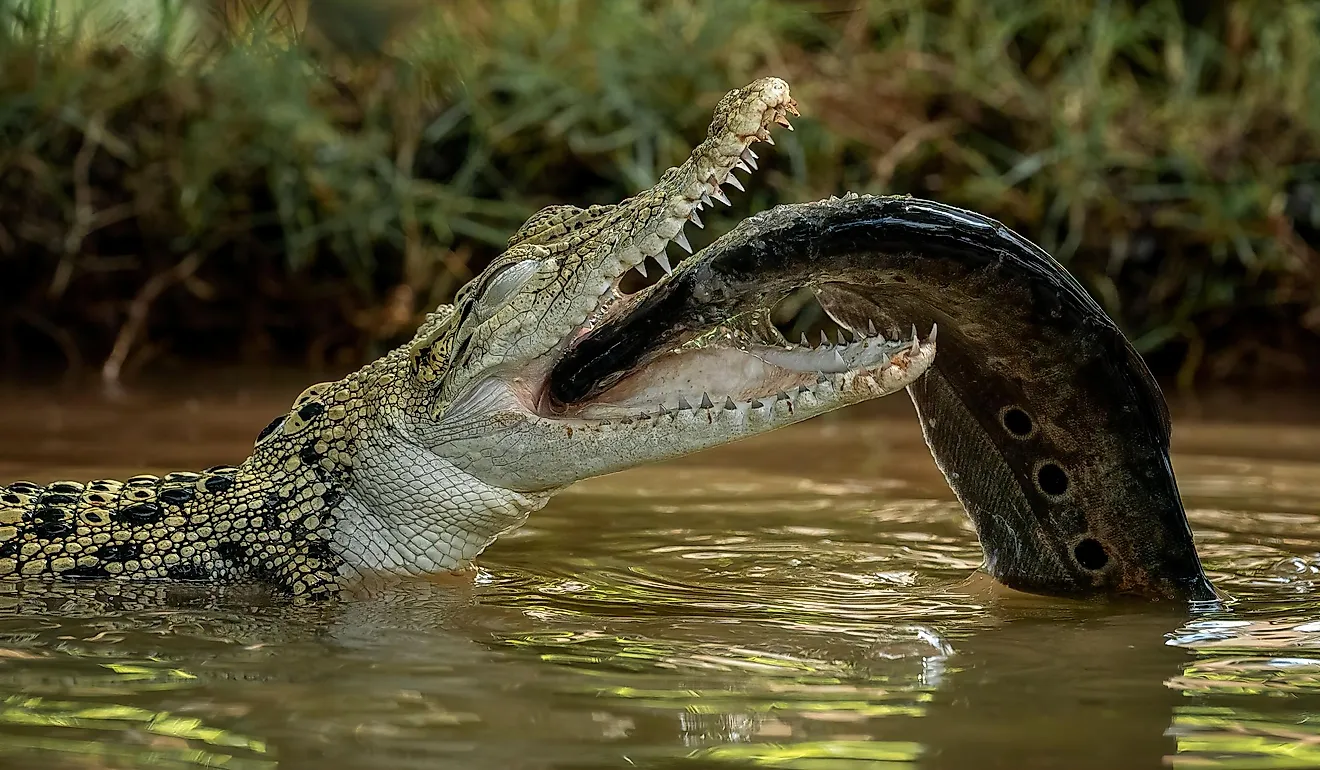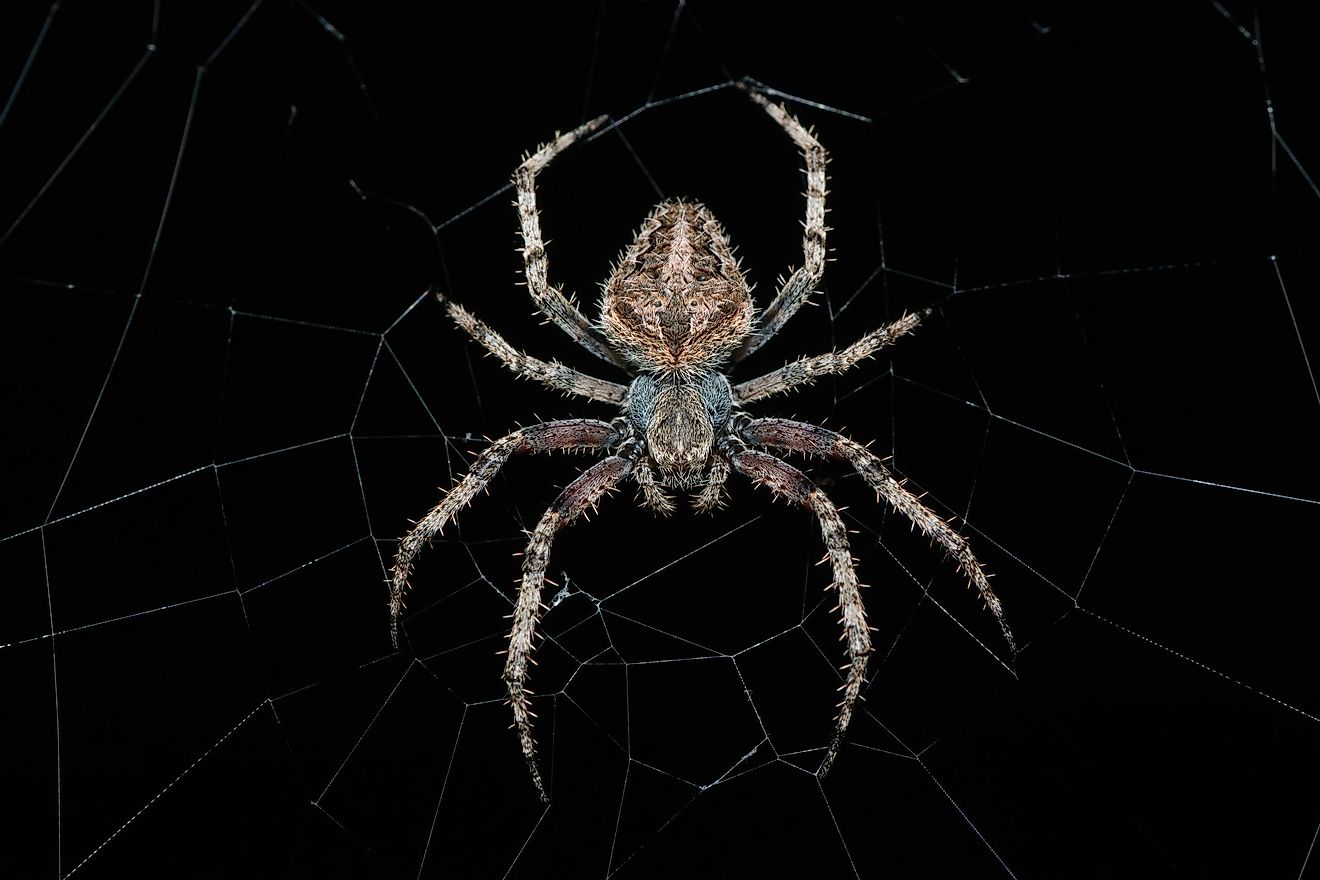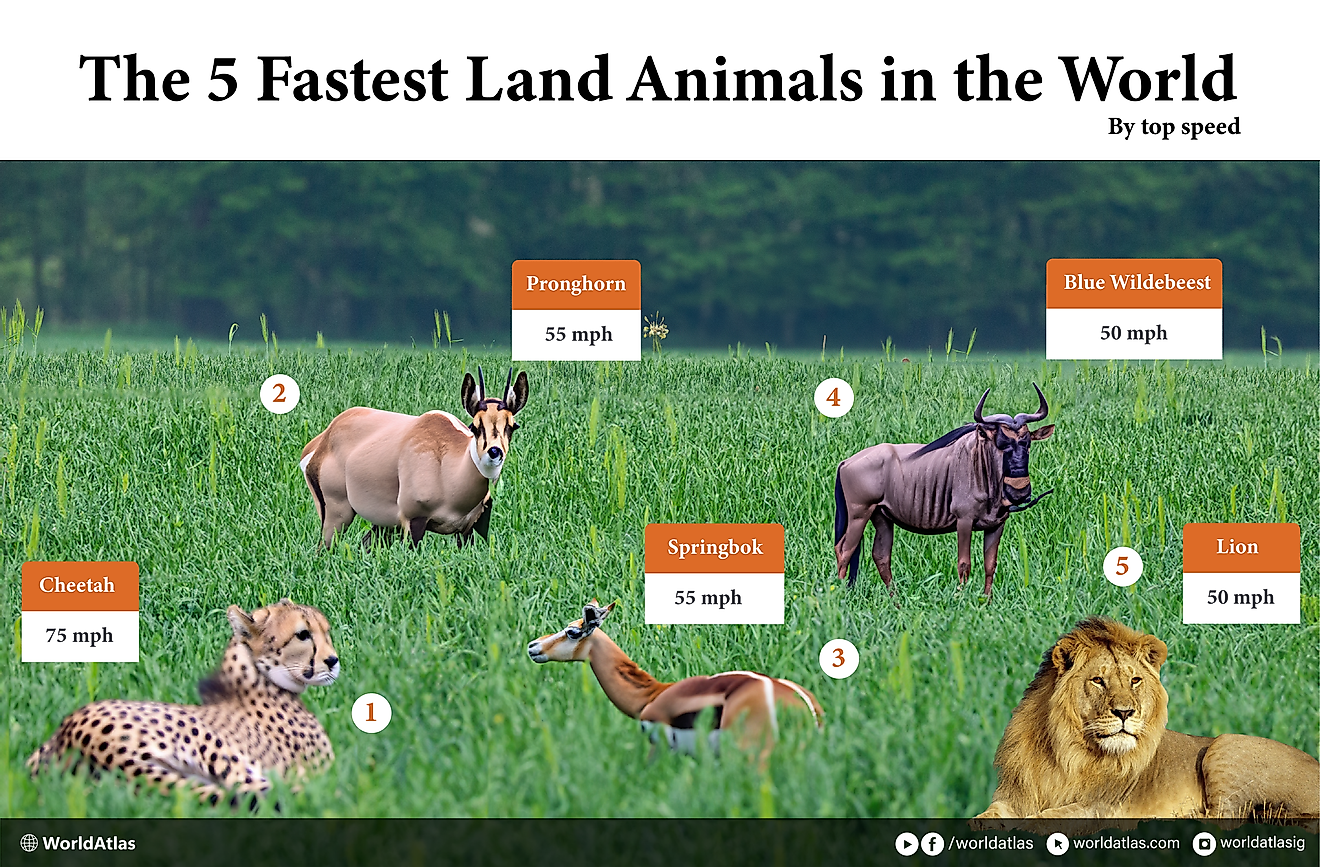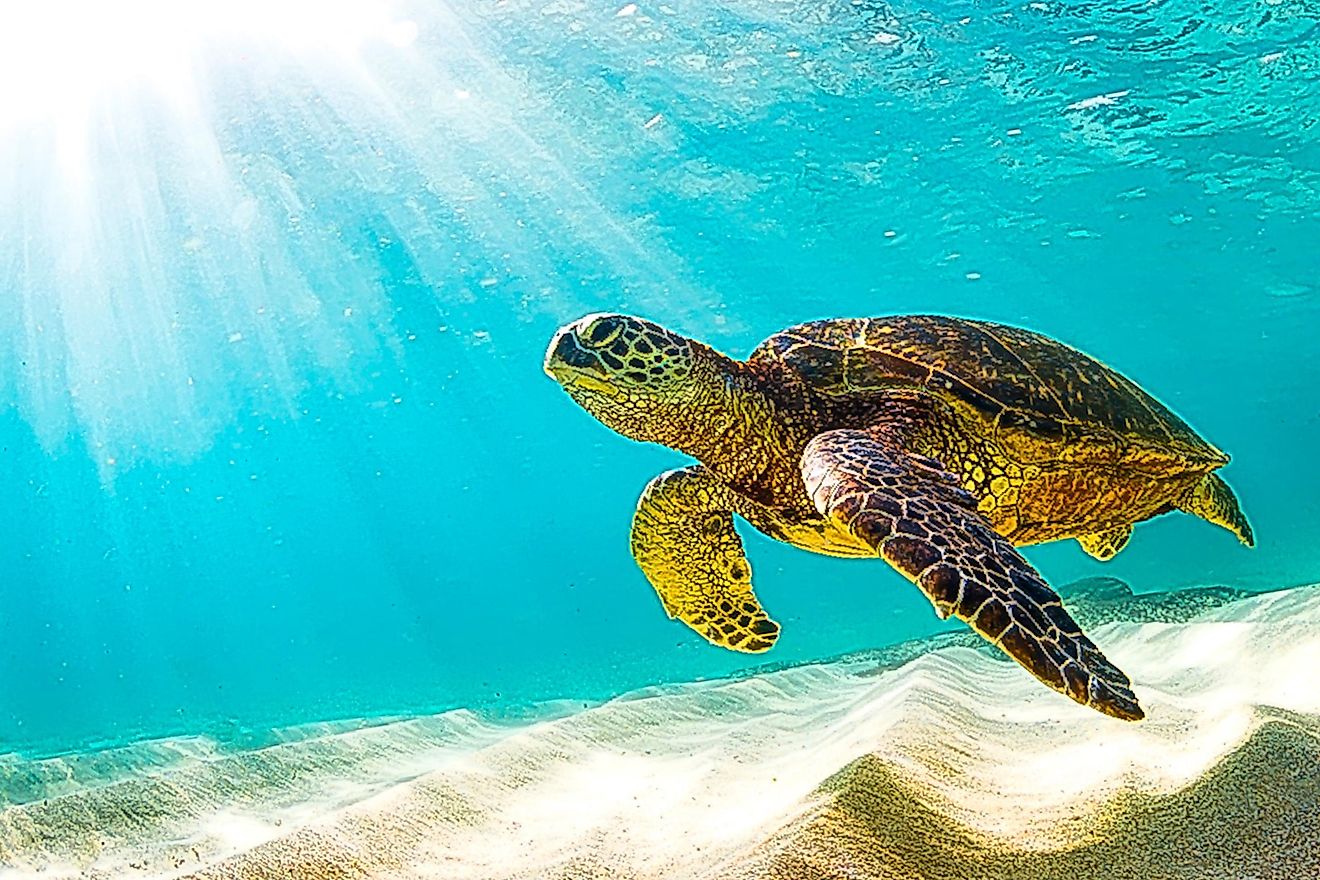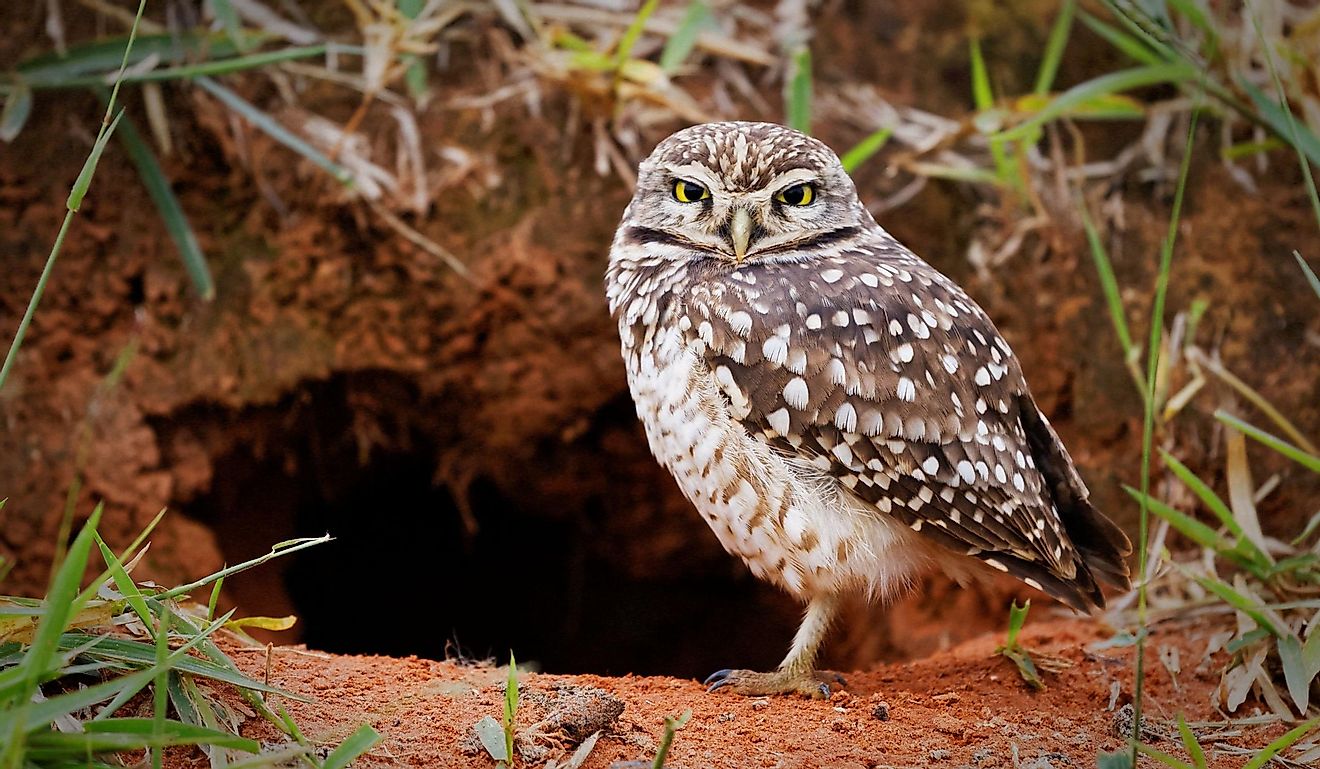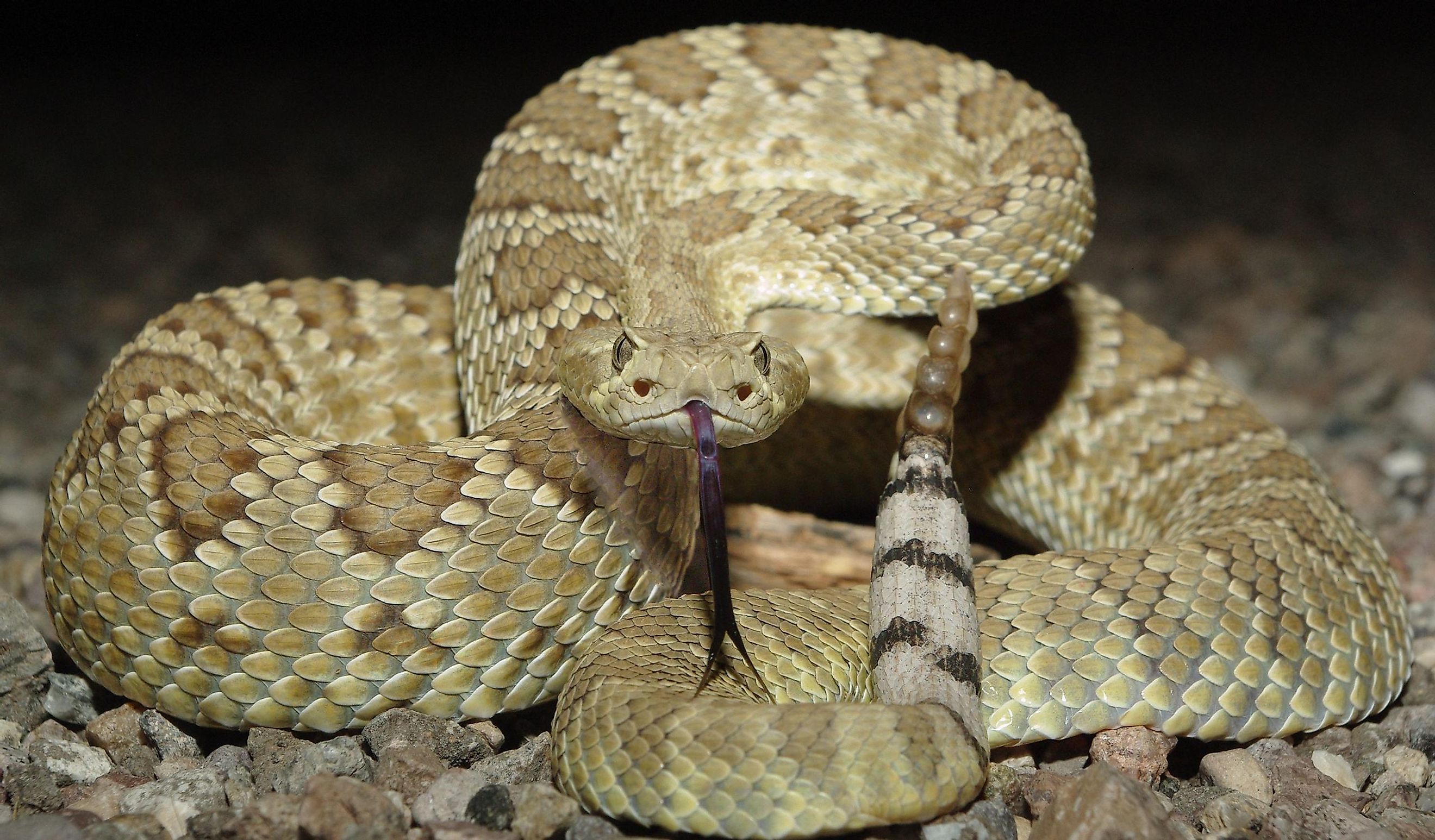
Which State Has More Venomous Snakes: Arizona or Georgia?
Snakes love the southern United States. For starters, it's warm and sunny, which is always a plus for cold-blooded creatures. There is also a wide range of habitats that suit the needs of various serpents. For example, Arizona's arid landscapes and moderate elevation range play into the likes of rattlesnakes, whereas Georgia's vegetation and abundant access to water works well with, say, cottonmouths, aka "water moccasins." While both states harbor a wealth of snakes, many of which are venomous, Arizona has more venomous snakes than Georgia. In fact, Arizona has more venomous snakes than any other U.S. state.
Venomous Snakes of Arizona
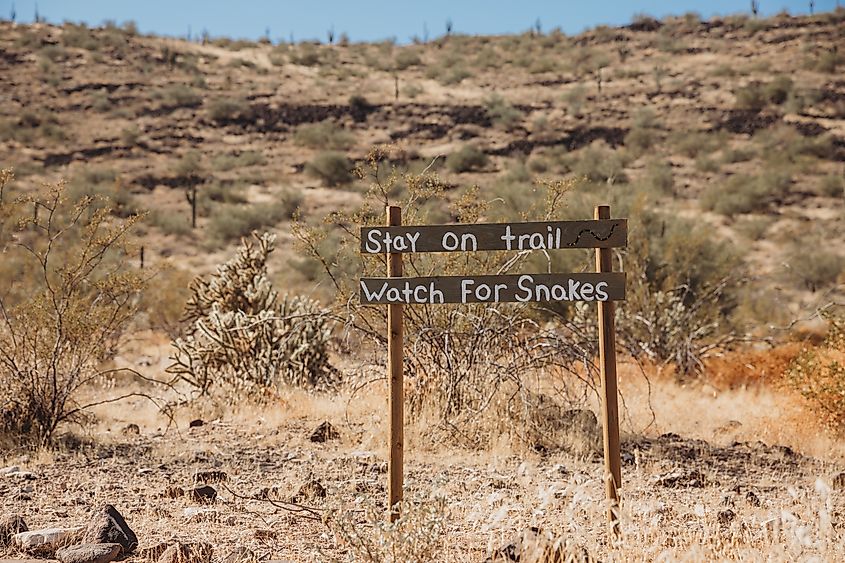
While the exact number of species does vary depending on the source (sometimes the margins along state lines and the breakdown of native vs invasive species/subspecies can ambiguate the situation slightly), one thing is clear: Arizona has a significant variety of snakes. According to the Highlands Center for Natural History, The Grand Canyon State possesses 52 native species. Other sources place that figure closer to 40 (while some push it higher still), but in terms of species of venomous snakes, the tally is consistently 19 or 20. Let's look a little closer (but not too close!) at our cast of venomous characters.
Arizona Coral Snake
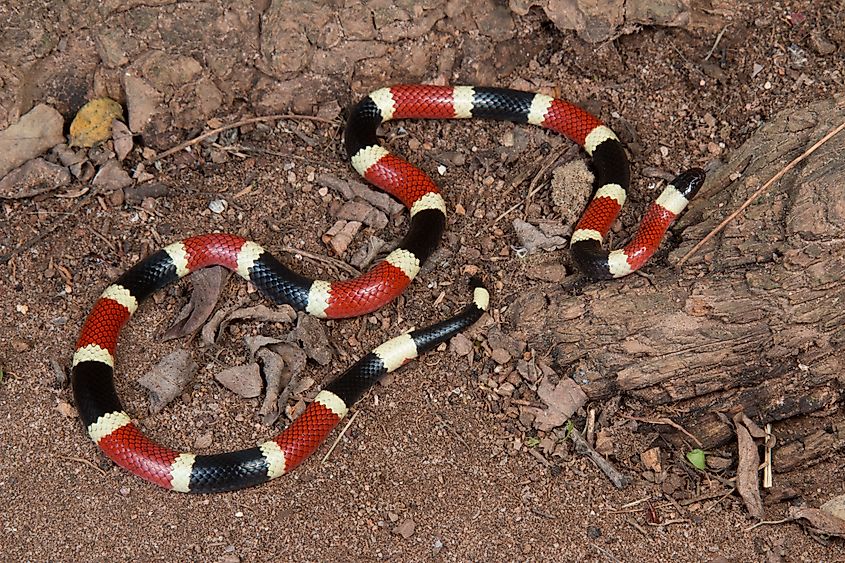
Venomous snakes utilize a variety of neurotoxins (i.e., act on the nervous system), cytotoxins (i.e., damage to tissue), and/or hemotoxins (i.e., negatively impact the victim's blood) in order to hunt prey. But in terms of self-defense, snakes would rather reserve their efforts and their supply of venom (which needs to be regenerated after significant use). Therefore, venomous snakes have evolved other warning signs to deter predators or nosy hikers. Case in point: the Arizona Coral Snake (Micruroides euryxanthus).
Also known as the Sonoran coral snake, the scales of this slim, colorful serpent are covered in repeating bands of red, yellow, and black, making it, in my opinion, one of the most beautiful snakes in the world. It's important to note that multiple nonvenomous snakes in Arizona (and elsewhere) have similar but slightly different patterns. This is where the helpful (albeit imperfect) rhyme comes in handy: Red on black, you're OK, Jack. Red on yellow, you're a dead fellow. It should also be noted that even though the Arizona Coral Snake is a member of the Elapidae family (i.e., a cousin to the cobra), it is generally too small to seriously harm humans. Nonetheless, leave these ostentatious slitherers where they lie.
Rattlesnakes
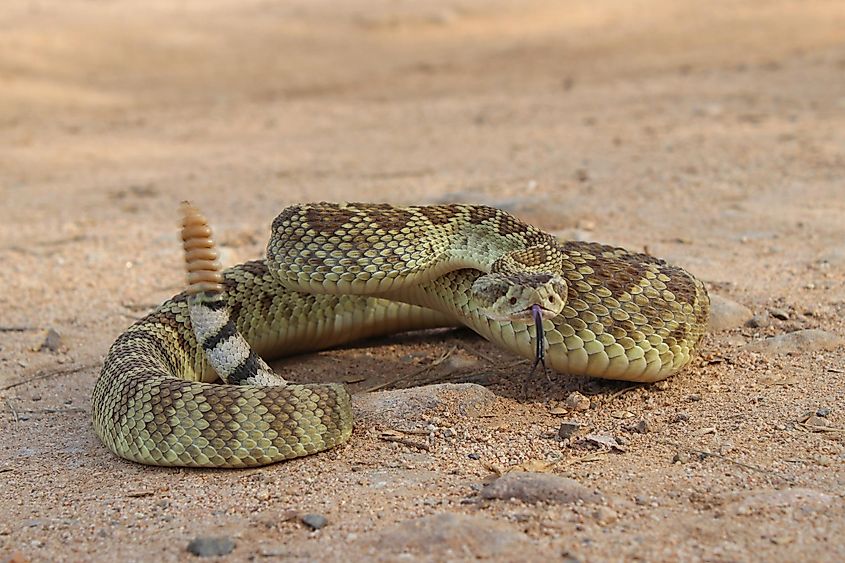
Arizona is home to upwards of 17 species/subspecies of rattlesnakes. These include the Grand Canyon rattlesnake, Arizona Black, Great Basin, Tiger, Hopi, Mojave, Northern Blacktail, Prairie, Arizona ridge-nosed, Southwestern Speckled, Western Diamondback, Desert Massasauga, Twin-Spotted, Banded Rock, and three subspecies of Sidewinders (Mojave Desert, Sonoran Desert, and Colorado Desert). While they vary (and overlap) somewhat in their appearance, behavior, and precise habitat, all of these pit vipers (i.e., of the family Viperidae) have one definitive thing in common: the quintessential rattle. When threatened, these snakes vibrate their tails - the ends of which are composed of hollow, keratin-based scales that rapidly strike each other - thereby producing a buzzing or rattling sound. If you happen to hear this warning system in the wild, naturalist Sandy Stoecker recommends stopping where you are, visually locating the rattlesnake, and then giving it lots of space as you move away from the area.
Sonoran Lyre Snake
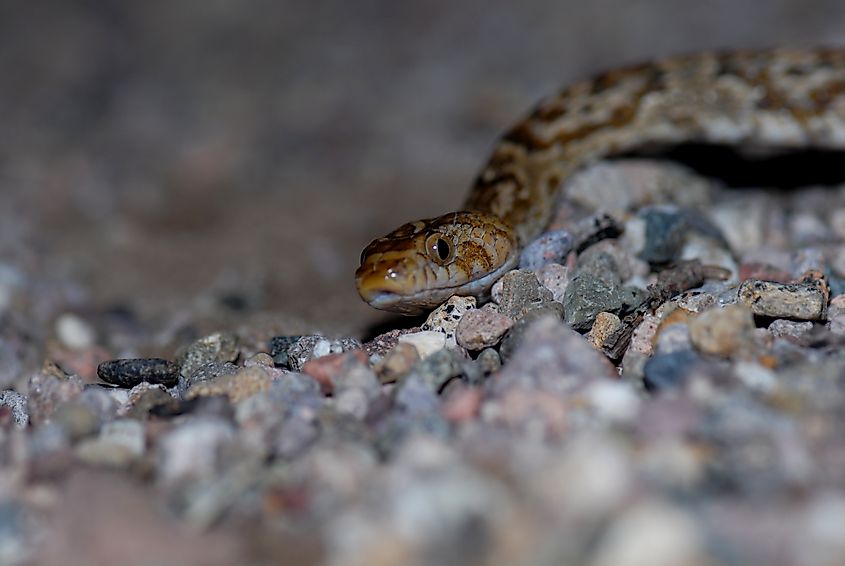
The Sonoran lyre snake (Trimorphodon lambda) enjoys rocky crevices throughout the deserts of southern Arizona, as well as southern Utah/Nevada and northern Mexico, and can thrive at sea level all the way up to about 7,400 feet in elevation. Despite its wide distribution, the Sonoran lyre snake is nocturnal and, therefore, rarely seen by humans. If some backcountry campers were to cross paths with one, they might initially mistake it for one of the many local varieties of rattlesnakes. The key differentiators to watch for would be the lack of rattle (though when threatened, lyre snakes do have a habit of shaking their tails) and the distinctive head shape, which tapers dramatically at the neck and bears a dark, V-shaped marking. Sonoran lyre snakes are only mildly venomous and lack fangs. Instead, they deliver toxins to prey, such as small lizards, by chewing with their rear teeth. As such, the threat posed to humans by this species of snake is minimal. Bites often amount to either no symptoms or manageable skin irritations.
Brown Vine Snake
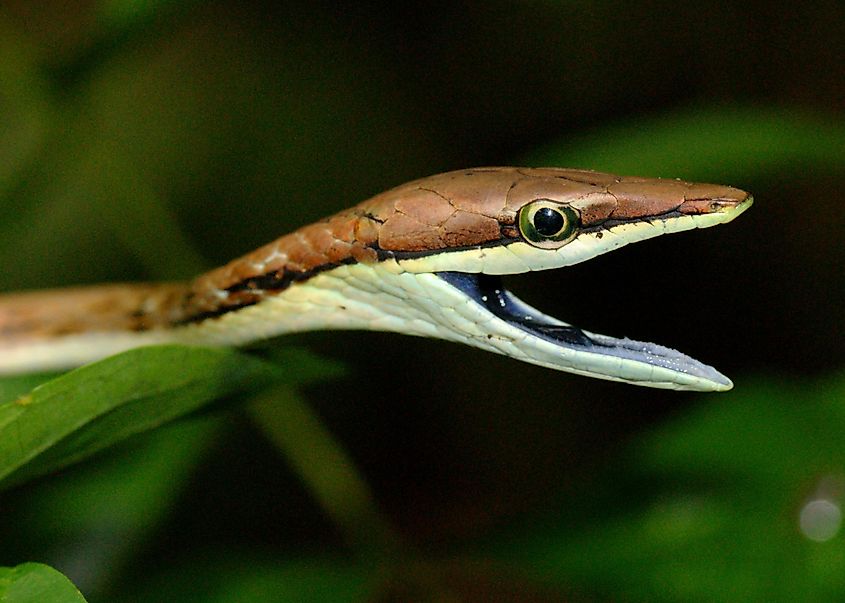
Another of Arizona's mildly-venomous snakes is the brown vine snake (Oxybelis aeneus), aka the Mexican vine snake. This species tends to take to the trees. In particular, it shows a propensity for temperate oak woodland, canyon riparian woodland, desert grassland, and pine-oak woodland environments that exist at moderate elevations. This spectrum has led to distribution throughout Mexico, Central America, and South America, as well as the extreme south-central part of Arizona. As for the latter location, it has only ever been spotted in the Atascosa, Patagonia, and Pajarito mountains, between 3,600 and 6,200 feet. Should you find yourself in this section of the Grand Canyon State, use your best camouflage-detecting skills to spot this three-to-six-foot-long, slender serpent with a pointed snout. If it notices you, then you might also see its gaping black mouth, which flashes when threatened.
Venomous Snakes of Georgia
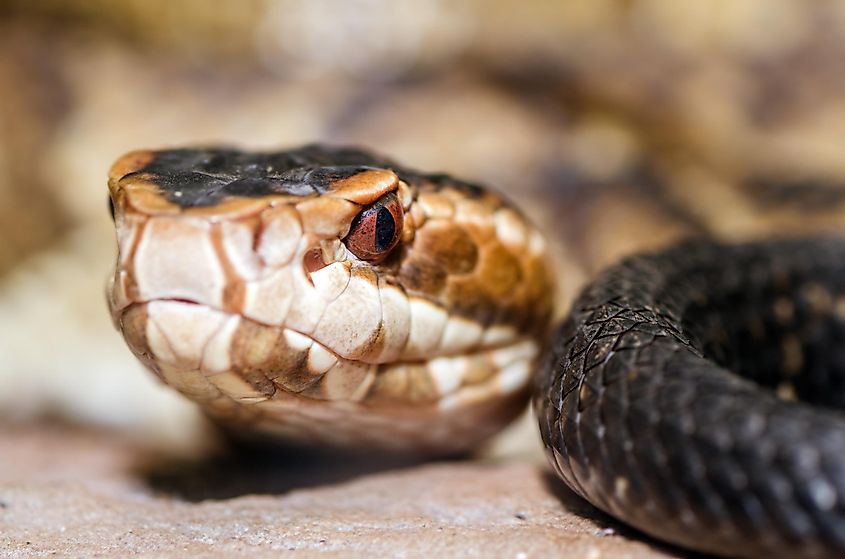
Skipping from the American southwest to the southeast, the state of Georgia has a similar number of overall snake species to Arizona (i.e., 46 or 47), but only seven or eight types of venomous ones. Again, given the static borders but dynamic ecology, experts disagree slightly on the exact figures. Nonetheless, we will cover all seven venomous species that residents or visitors in Georgia could potentially encounter.
Rattlesnakes
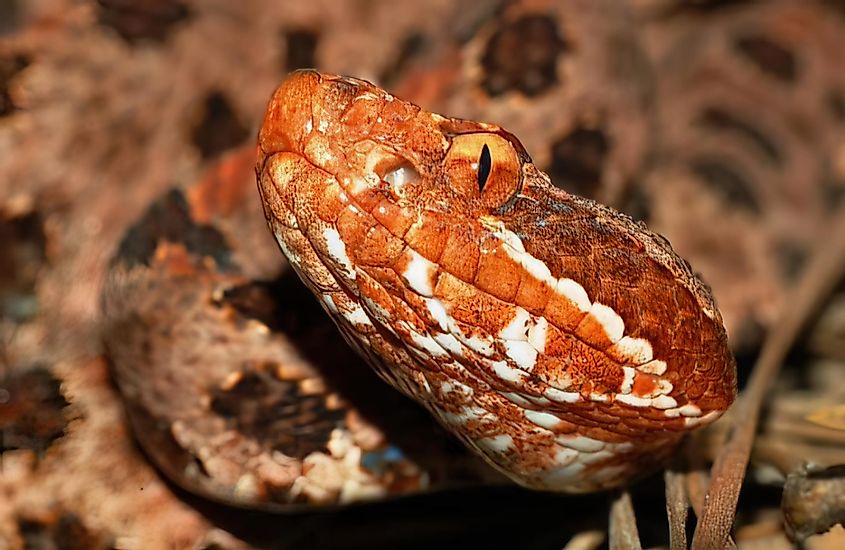
The Peach State has its share of rattlesnakes. The Eastern diamondback rattlesnake (Crotalus adamenteus) is not only the largest of the four but Georgia's largest venomous snake period. It generally reaches 33 to 72 inches in length (though some have been documented as long as 96 inches) and weighs upwards of ten pounds. Watch for this fellow in the southern half of the state. The two species of pigmy rattlesnakes, the Carolina pigmy rattler (Sistrurus miliarius miliarius) and the dusky pigmy rattler (S.m. barbouri), on the other hand, are quite small (i.e., between 14-22 inches), but roam throughout much of Georgia. The timber, aka canebreak, rattlesnake (Crotalus horridus), which spans 30-60 (but as much as 72) inches in length, is also distributed throughout most of the state.
Eastern Coral Snake
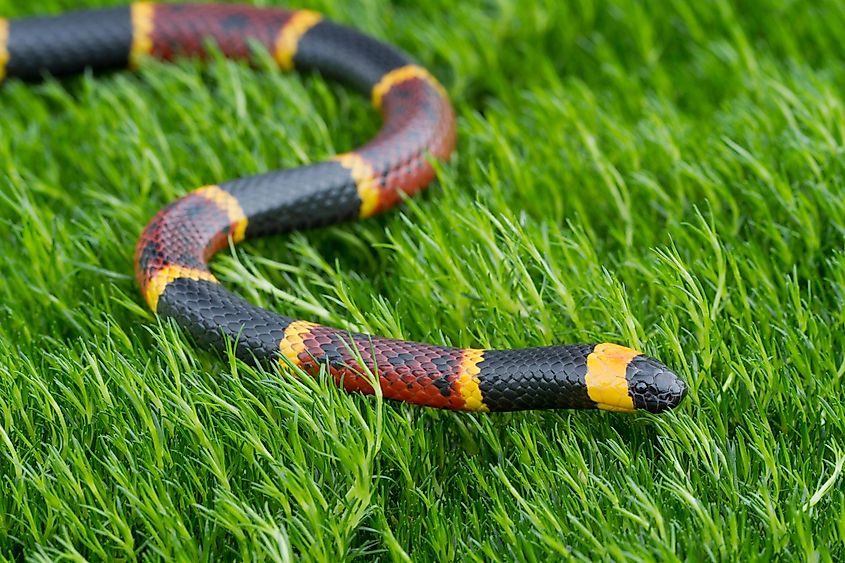
As with Arizona, Georgia has a coral snake of its own - this time, the Eastern coral snake (Micrurus fulvius). This mid-sized (24-36 inches long) and slender creature once again has bands of red and black separated by strips of yellow. They enjoy habitats such as hardwood forests, pine flatwoods, and coastal scrub - places that are not necessarily dense in vegetation but have surfaces strewn with leaves and debris. This is because eastern coral snakes like to hide beneath organic cover or even underground. For this reason, encounters with humans are rare. Nonetheless, its venom is potent and can pose a serious risk if left untreated. But as with all snakes, the eastern coral snake would much rather save its strength for hunting viable prey, which in this case means other snakes, lizards, and small amphibians.
Copperhead
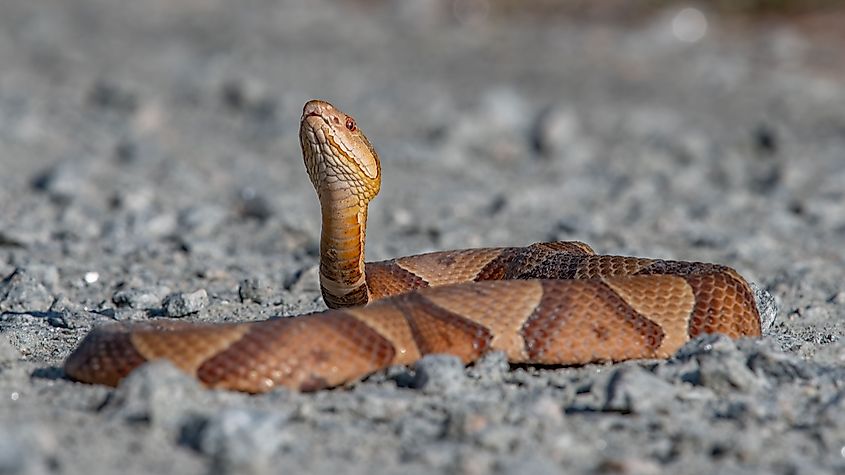
The copperhead (Agkistrodon contortrix), aka the eastern copperhead, has a wide distribution throughout the United States (i.e. most of the eastern seaboard and over to the central and south-central regions). As for Georgia, the only place it fails to penetrate is the southern chunk (with the exception of the extreme southwest). Given the vast territory, copperheads have demonstrated the ability to thrive in a wide range of niche habitats. These pit vipers are usually between 24-40 inches in length, hefty, tan to brown in appearance with darkened hourglass-shaped crossbands, and possess triangular heads and cat-like eyes. The copperhead's venom is not particularly strong, and in Georgia, attacks on humans occur mostly when someone is trying to kill or otherwise harass an individual.
Cottonmouths
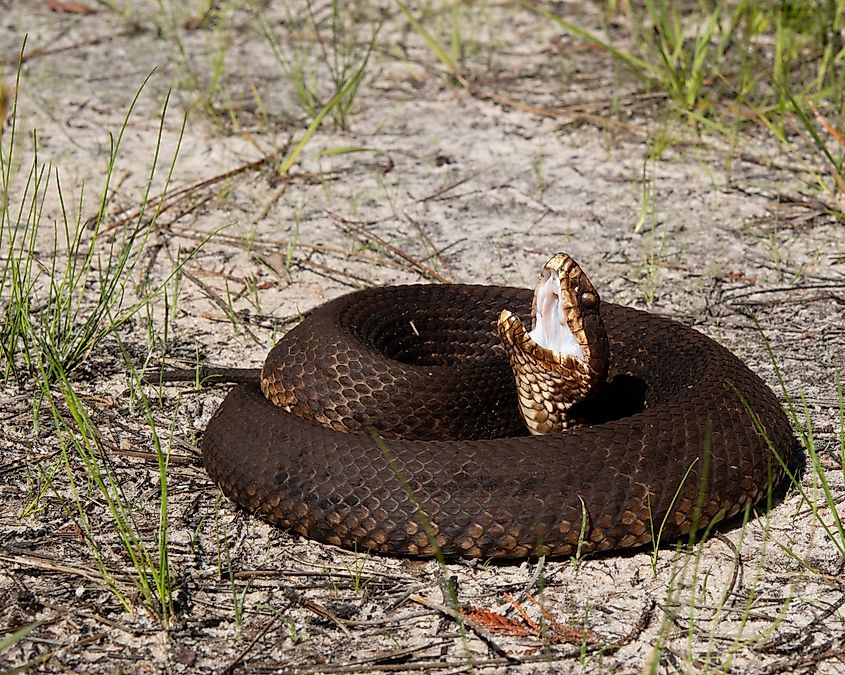
Two types of cottonmouths, aka water moccasins, can be found in Georgia. The Northern cottonmouth (Agkistrodon piscivorus), contrary to its name, lives mostly in the central portion of the state, whereas the Florida cottonmouth (Agkistrodon conanti), this time, as the name implies, lives mostly in the Sunshine State, can be found on the north side of the border. Until 2015, the latter was considered a subspecies of the former, but now each cottonmouth is classified as a separate species. Both snakes are large, darker in color (once they reach adulthood, that is), and famously brandish the white of their inner mouths when threatened (hence the name). Cottonmouths also spend ample time either near water or actively swimming in slow-moving bodies - hunting for fish, frogs, and whatever else they can find amongst their aquatic habitats.
Arizona and Georgia are two states in the southern U.S. with a large variety of snakes. Each has 40+ total species, many of which are venomous (to some degree). However, when the numbers are tallied, Arizona has significantly higher numbers than not only Georgia but every other state in the country. With approximately 20 species/subspecies, Arizona is the undisputed king of venomous snakes. So have an eye if you are trodding about in the American South, but also remember that snakes are still a minor hazard in these parts. Simply watch for bright colors, listen for warning rattles, and give all wild snakes a respectful berth.
